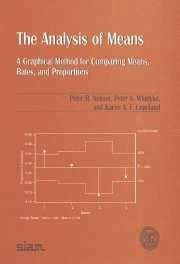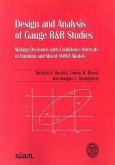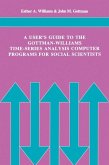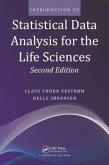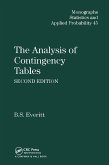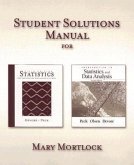Contains examples from a variety of fields adapted from real-world applications and data with step-by-step instructions. With this book, potential ANOM users can find solutions to standard problems. It contains SAS examples showing the system's ANOM capabilities and how SAS was used to produce selected ANOM decision charts.
The analysis of means (ANOM) is a graphical procedure used to quantify differences among treatment groups in a variety of experimental design and observational study situations. The ANOM decision chart allows one to easily draw conclusions and interpret results with respect to both statistical and practical significance. It is an excellent choice for multiple comparisons of means, rates, or proportions and can be used with both balanced and unbalanced data. Key advances in ANOM procedures that have appeared only in technical journals during the last 20 years are included in this first comprehensive modern treatment of the ANOM containing all of the needed information for practitioners to understand and apply ANOM. 'The Analysis of Means: A Graphical Method for Comparing Means, Rates, and Proportions' contains examples from a wide variety of fields adapted from real-world applications and data with easy-to-follow, step-by-step instructions. It is front loaded, so potential ANOM users can find solutions to standard problems in the first five chapters. An appendix contains several SAS[registered] examples showing the system's ANOM capabilities and how SAS was used to produce selected ANOM decision charts in the book. Given these features, the lack of any other book on ANOM, and the recent inclusion of ANOM in SAS, this book will be a welcome addition to practitioners' and statisticians' bookshelves, where it will serve both as a primer and reference.
Hinweis: Dieser Artikel kann nur an eine deutsche Lieferadresse ausgeliefert werden.
The analysis of means (ANOM) is a graphical procedure used to quantify differences among treatment groups in a variety of experimental design and observational study situations. The ANOM decision chart allows one to easily draw conclusions and interpret results with respect to both statistical and practical significance. It is an excellent choice for multiple comparisons of means, rates, or proportions and can be used with both balanced and unbalanced data. Key advances in ANOM procedures that have appeared only in technical journals during the last 20 years are included in this first comprehensive modern treatment of the ANOM containing all of the needed information for practitioners to understand and apply ANOM. 'The Analysis of Means: A Graphical Method for Comparing Means, Rates, and Proportions' contains examples from a wide variety of fields adapted from real-world applications and data with easy-to-follow, step-by-step instructions. It is front loaded, so potential ANOM users can find solutions to standard problems in the first five chapters. An appendix contains several SAS[registered] examples showing the system's ANOM capabilities and how SAS was used to produce selected ANOM decision charts in the book. Given these features, the lack of any other book on ANOM, and the recent inclusion of ANOM in SAS, this book will be a welcome addition to practitioners' and statisticians' bookshelves, where it will serve both as a primer and reference.
Hinweis: Dieser Artikel kann nur an eine deutsche Lieferadresse ausgeliefert werden.

